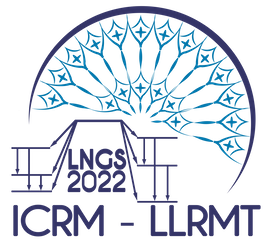Speaker
Description
Innovative experimental techniques are needed to further search for dark matter (DM) weakly interacting massive particles. The ultimate limit is represented by the ability to efficiently construct and identify nuclear and electron recoil events at the experimental energy threshold. Gaseous Time Projection Chambers (TPC) with optical readout are very promising candidates thanks to the 3D event reconstruction capability of the TPC technique and the high sensitivity and granularity of last generation scientific light sensors. The CYGNO experiment is pursuing this technique by developing a TPC operated with He:CF4 gas mixture at atmospheric pressure equipped with a Gas Electron Multipliers (GEM) amplification stage that produces visible light collected by scientific CMOS camera. A fast photodetector is used to measure the drift time of the primary ionization electrons and thus reconstruct the third coordinate of the ionization track. Events are reconstructed with an innovative multi-stage pattern recognition algorithm based on advanced clustering techniques. The detailed reconstruction of the event topology allows to infer the direction of the recoils and it also gives a powerful tool to discriminate DM signal from radioactivity background.
A 50-liter demonstrator (LIME) was successfully operated at the Frascati National Laboratories and it will be commissioned at the Gran Sasso Underground Laboratories (LNGS) in 2022. Tracking performances, directionality, and energy measurements down to few KeV have been evaluated with radioactive sources. A detailed assessment of the internal background due to radioactive contamination of the detector’s components has been conducted. These measurements together with estimates of LNGS cavern background are used in an advanced Monte Carlo simulation to evaluate the demonstrator sensitivity to DM. Data from the underground campaign of LIME will be essential to characterize the detector in a low background environment demonstrating the scalability of such a detector concept to larger apparatus to significantly extend our knowledge about DM and neutrinos.

